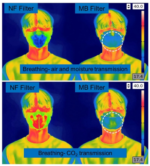Designing for Additive Manufacturing
Over the last six months, RAM3D have seen an unprecedented increase in both large and small companies interested in trying 3D metal printing as an alternative to other forms of manufacturing. This is possibly because they have had time to work on projects during the COVID-19 lockdown. RAM3D works closely with their clients offering them advice on how to alter the part’s design to make the part stronger, lighter, and therefore cost competitive using dedicated design for production, using additive manufacture. When designing a part for metal 3D printing, the biggest thing to consider is the material properties of the part you want to 3D print; if the mass doesn’t need to be there, get rid of it! Traditional manufacturing and design methods tend to be constrained by tool paths, machine time, material shapes and sizes. This means, if you can’t remove the material, it stays there. With AM you are less tied to these constraints allowing you to do cut outs, pockets, fillets, undercuts and even combine part assemblies, where traditionally you couldn’t. Some CAD programs even contain part optimisation for additive parts. This is a great way of reducing the part cost, while creating innovative and interesting looking parts. Where you cannot remove large surface areas or you need to keep a solid look to a part, there is the option of adding an internal lattice structure. Lattice Structures One of best ways to reduce mass without reducing too much structural integrity, is to add a lattice structure. The benefit of using a lattice over simply hollowing a part, is the lattice does not require internal support. When designed correctly, it can maintain good strength and performance. RAM3D can create a simple uniform wall thickness internal lattice structure using their Netfabb build software. This is great for those […]










